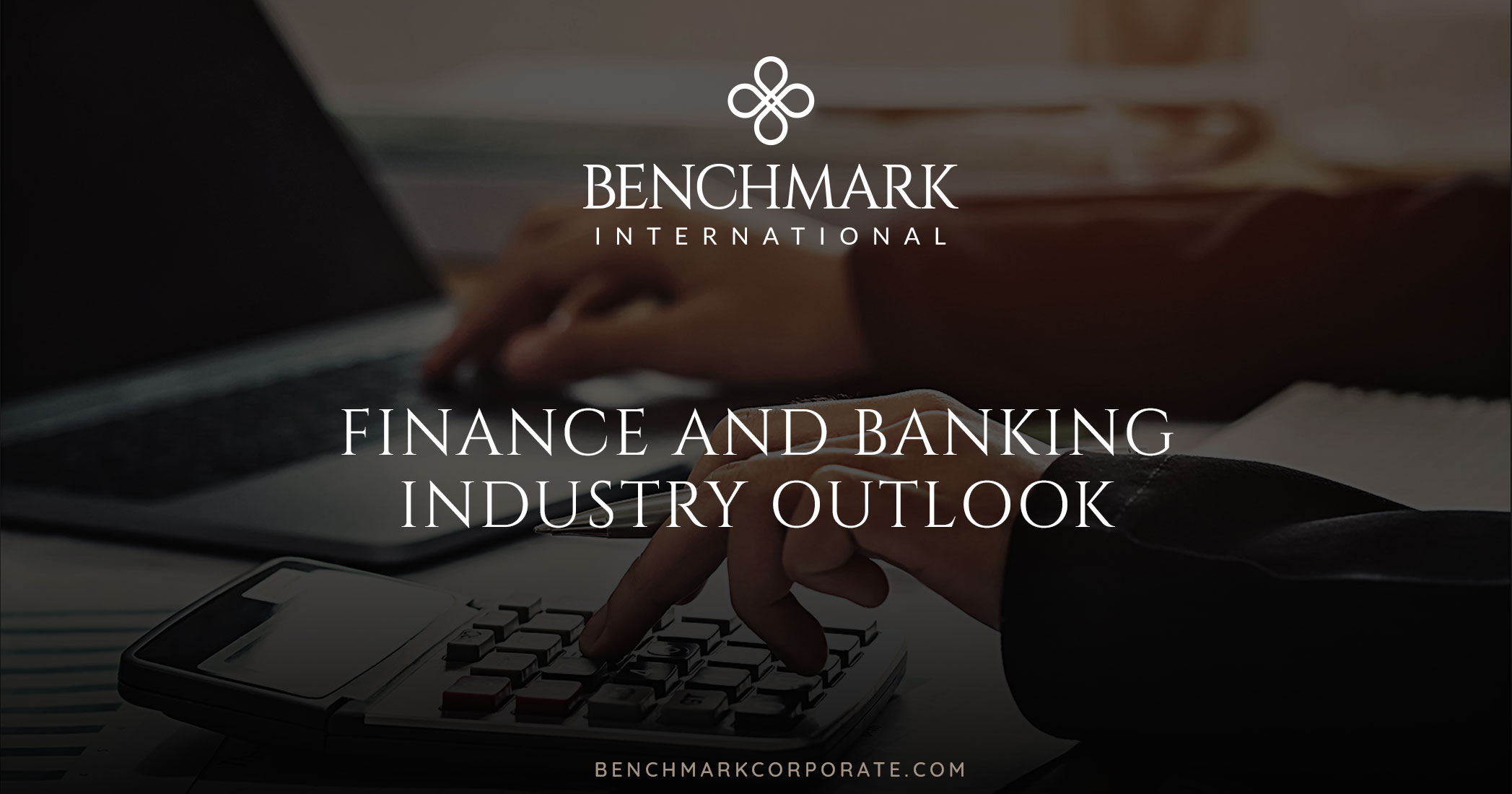Deal activity continues to heat up in the cryptocurrency space as the adoption of crypto becomes more mainstream. Last year was a huge year for cryptocurrencies. In 2021, the price of bitcoin was up 49%, Ether was up 390%, and Dogecoin was up a whopping 1,600%. The M&A market for cryptocurrency soared by nearly 5,000% last year. But this is nothing compared to the activity for M&A of crypto companies.
READ MORE >>Archives
The Surge Of Cryptocurrency M&A
2022 Fintech Industry Report
The global fintech market was valued at $6.5 trillion in 2021 and is estimated to grow at a compound annual growth rate (CAGR) of 13.9% between 2022 and 2028 to reach $16.65 trillion.
READ MORE >>Share this:
Financial Services Industry Report
Financial Planning & Advisory Sector
In 2022, the market size of the financial planning & advisory industry is $59.2 billion. It is expected to increase 4% this year. Between 2017 and 2022, the market has grown 4.5% per year on average. The size of the market has increased faster in the U.S. than the overall economy.
Industry profit declined in 2020 due to declining assets under management and lower return on assets but increased in 2021 as the economy began to recover. As macroeconomic conditions continue to improve through 2026 gradually, industry operators are expected to benefit from rising equity values and rising interest rates.
High competition is a challenge in the industry, while the population's median age represents an opportunity. This is because the rising median age of the U.S. population is approaching retirement age, which increases the demand for retirement planning, capital preservation, and estate planning.
READ MORE >>Share this:
Benchmark International Successfully Facilitated the Transaction Between Jormandy LLC and Security Credit Services
Benchmark International is pleased to announce the transaction between Jormandy, LLC (“Jormandy”) and Security Credit Services (“SCS”).
READ MORE >>Share this:
2020 Financial Services Sector Update
As the world still faces the COVID-19 pandemic, businesses in the financial services sectors are preparing themselves for life after coronavirus. This includes the management of credit risk for borrowers, and turning to digital strategies to drive revenue growth.
Insurance and Innovation
The COVID-19 pandemic is forcing the entire insurance sector to implement and leverage digital platforms that enhance customer experiences as a key part of their business strategies in a transformed world in which people are working remotely and driving their vehicles less often. The pandemic has led insurance companies to implement premium relief efforts, offer payment deferral plans, and expand coverage, but these companies are also turning to more digital strategies, emphasizing online customer experiences at a time when more and more transactions occur online versus in person. Consumers are demanding new products such as cyber insurance, more modern life insurance options, and usage-based car insurance. Middle-market insurance companies have always been a bit technologically behind the big players, but they now must adopt new innovations in order to merely keep up with convenience, simplicity, mobility, and modern interfaces that customers have come to expect.
Banking and Lending
Financial institutions are in a position where they need to understand borrowers’ needs and current financial states more than ever. They must also find new ways to measure performance through the rest of 2020. They have already provided assistance to many small and mid-size businesses during the crisis, some of which will be forgiven. Loan modifications have been provided to help businesses survive, and there is likely to be some loan losses. As the economy begins to recover, banks will be able to get a better understanding of borrowers’ financial states, knowing that it will take some time for businesses to bounce back. Deciding whether to lend more credit will be a difficult decision for financial institutions, especially for harder hit sectors such as hospitality and retail. Understanding the recovery of these industries as a whole will be critical through the use of data and payment activity monitoring.
Family Offices
Family offices are private wealth management firms that serve high-net-worth individuals and their families by offering a total outsourced solution to managing finances and investments. There are nearly 2000 of these types of firms around the world, with more than half in the U.S.
These firms have typically relied on physical offices to conduct business. Now in the wake of COVID-19, a shift to virtual family offices has become a necessity during a time where remote work has become commonplace. This has been a challenge for many family offices because most simply do not have the appropriate technology and infrastructure to result in a seamless transition to a virtual office. These businesses will be forced to evolve technologically into the rest of 2020 and beyond. As outdated technology is replaced with better performing innovations, family offices will become more mobile and agile, as well as better equipped with more adequate cybersecurity. Connectivity is also a timely issue, as Millennials will be inheriting family wealth in the future and they demand immediate access to data without disruption and with more transparency. This digital transformation to virtual family offices will also allow for a leaner staff that can deploy resources more quickly.
Capital Markets
The events of 2020 have led capital markets to affect businesses in different ways. Underwriting slowed for high-yield borrowers. Mergers were put on hold. Stock markets have been up and down, and a record number of securities and their values have been exchanged. As financial conditions improve, confidence combined with cheap credit will have companies seeking liquidity to get through the rest of the crisis. Corporations have been tapping into the public debt markets at high rates. While this generated profits at the start of the recession, bonds are less likely to be issued as businesses restore their reserves and establish liquidity that will be needed into the future.
For the rest of 2020 and into 2021, investment banking associated with M&A activity will continue to be tied to the economic recovery amid a softer deal pipeline. When the economy finally bounces back, there will be opportunity for a backlog of deals, boosting advisory revenues.
Data and Private Equity
In the time of COVID-19, certain private equity trends have emerged and are expected to be here to stay. People are still paramount, but how they work has changed. Data continues to be more important to deal making to determine the areas for greatest earnings impact. Datasets will track strategic movements and metrics within companies to gauge their performance. Remote workforces will allow competitive PE firms to source key financial talent from entirely new geographic regions. Firms are also expected to outsource more of their back-office work functions and instead focus on front-office responsibilities.
Ready to Sell?
If you are a business owner who is considering making a move, our M&A experts at Benchmark International would love to discuss how we can help with the sale, exit or growth of your company.
READ MORE >>Share this:
Global Investment Banking Companies And M&A
New technologies are constantly reshaping industries, and global investment banking is not immune to these impacts, as newfinancial startups create technologies that cut into the relationship-based work that investment banks do.In order to continue to thrive, the big investment banks must keep up with innovation.
IPOs
The underwriting of initial public offerings (IPOs) has always been a major source of profit for investment banks. Prominent investment banks play a large part in IPOs, as they come with prestigious reputations that instill confidence among public investors in the legitimacy of a deal.
However, tech companies have changed the game by negotiating lower fees, exploring alternatives to IPOs, and simply electing to not go public at all. Technology companies are usually the highest-returning public offerings. When venture capitalists and sovereign wealth funds put more cash on the table, some startups are able to remain private, providing challenges for investment banks.
Going public is a complicated legal process and most companies need the guidance of investment banks, which profit from the large fee that they earn to protect themselves from risk if the company’s stock underperforms.
Big investment banks have had to shift their strategies and turn to internal automation and technology in order to secure their competitive advantage in the world of IPOs. This allows them to hire fewer junior bankers, complete more IPOs in less time, and maintain high profit margins.
Asset Management
Asset management is a highly profitable financial service, but it has faced increased regulation since the 2008 financial collapse. These regulations make it more difficult for investment banks to trade with client money because of checks and balances that ensure the banks are not carrying too much risk. Dedicated asset management firms do not face the same regulations as investment banks, so they tend to be a more popular growth option for investors. Also, money management firms are able to drive returns at smaller fees.
Strategic M&A
Traditionally, mergers and acquisitions were solely viewed as a pathway to increase earnings per share for companies combining assets with similar businesses. Big investment banks were once major players in these transactions, prior to the shift in focus to more strategic M&A solutions that require less financial management and more product vision. Middle market M&A expands with more technology options and big investment banks become less relevant in a shifting process that calls for more concentrated expertise, strategic vision, and an interest in delivering on the goals of business owners rather than just collecting hefty fees. M&A advisory firms are more suited to achieving the individual aspirations of owners through the crafting of strategies that are carefully tailored to their needs.
M&A is a very relationship-driven industry. The biggest investment banks often do not garner a high level of trust among executives for M&A transactions, and are subject to more potential conflicts of interest than that of smaller banks or advisory firms—which are also able to conduct M&A deals more quickly and affordably.
As the industry landscape changes for big investment companies, they are being forced to adapt in different ways. Some banks are selling off dwindling operations and focusing on areas that are still profitable. Some are hurrying to launch new technology and digital products. Others are restructuring and hiring new workers in places where it costs less to operate. Overall, big investments banks must change the way they do business in order to fend off further decline.
Contact Us
When you need global M&A expertise to guide your business into the future, contact us at Benchmark International. We will leave no stone unturned when it comes to crafting the right kind of strategies that work for you.
READ MORE >>Share this:
Finance and Banking Industry Outlook
The financial industry is an ever-evolving industry dealing with constant regulatory adjustments, scrutiny, competition, etc. The financial industry is also one of the first industries to look toward for a current health report on an economy as well. Numerous factors impact the financial sector, such as changing customer behaviors, macroeconomic cycles, data protection legislation, political climate, etc.
M&A activity in the banking and finance industry has been on the rise in the last few years. This trend looks to continue as we head towards the end of 2019, and begin to take a peek around the corner in 2020.
Key Industry Trends
Look for M&A activity in the finance industry to continue to place a major focus on improving technology, product offerings, and overall customer satisfaction.
- At the base of much of the M&A activity, we currently see a technology arms race in the finance industry. Banks and financial institutions have identified a strong need to enhance their technological features, and this has become a focal point for M&A activity in this industry.
- One interesting factor to watch for as we move forward is the continued entrance of non-traditional players into the finance industry, commonly referred to as fintech. The fintech group is an emerging group that heavily utilizes technology to deliver financial services, unlike their more-traditional counterparts. Fintech disruptors are the technologically innovated companies that are competing head to head with the traditional financial methods we have grown accustomed to for years. As this relates to M&A activity in the finance industry, one might assume a combination of financial services and technology would make for an attractive acquisition or merger opportunity.
- Customer service remains a high priority for all banks and financial institutions. However, customer service can theoretically split into two parts: The first part involves people and relationships, which smaller banks tend to tout as an advantage over larger banks. The second part is more strategic, involving product offerings that will better keep customers satisfied. Larger banks tend to win out with more product offerings over their smaller counterparts based on economies of scale, and access to significantly more resources. M&A opportunities allowing a bank to enhance its product offerings is an attractive feature as well as acquiring talent and relationships through acquisition. For smaller banks and financial institutions that find it harder to keep up, being acquired by a larger bank may be an attractive strategy to explore as we look toward the future.
Debt Financing and Interest Rates
Lastly, M&A transactions typically involve some form of debt financing, which a lot of times will make up the majority of the cash at close. Interest, which is the cost to borrow money, can severely impact an M&A transaction from a funding perspective, and certainly an economy for that matter. Though they are trending higher, interest rates remain reasonable for the time being, and not far above historical standards.
It appears a significant portion of private equity firms are financing a large percentage of their M&A transactions with nonbank debt. In comparison, other groups are using cash reserves, which end up lowering the dependency on debt financing. A movement in valuations, rates, and funding could cause a shift either way in M&A activity, though for now, the environment appears stable. Should interest rates continue to rise, eventually causing equity market volatility, one would assume this would force buyers to focus on consolidating their strategic positions more than pursuing opportunistic acquisitions.
Author
Neal Wilkerson
Senior Analyst
Benchmark International
T: +1 615 924 8607
E: DWilkerson@benchmarkcorporate.com
READ MORE >>
 Benchmark International
Benchmark International  Benchmark International
Benchmark International 








